Collaborative Culture Fuels Meriden’s Blended Success
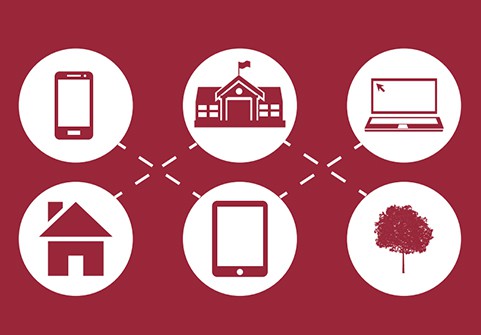
School districts nationwide are making progress on personalized learning; student access to technology is improving, teacher leaders are being identified and cultivated, blended learning strategies are being phased in. A great example is Meriden Public Schools, which hosted a Blended Learning Summit (#MPSblended).
Innovation begins at the top! Congrats to the entire leadership team at @MeridenK12 for a great turnout! #mpsblended pic.twitter.com/Wdv9wAYdKJ
— @myONreader (@myONreader) March 17, 2015
Over the last two centuries Meriden Connecticut has been home to factories that made trains, knives, and guns. The Quinnipiac River cuts through steep bluffs in South Meriden. The town of about 60,000 people has a few 300 year old buildings and is an Amway stop between New Haven and Hartford.
The two high school district serves a diverse and high need population. As a result, it receives state grant funding that supports: Extended Learning Time, Early Literacy, Expansion of their Family Resource Center, and 21st Century Community Learning Center after school programming.
Mark Benigni was appointed superintendent in 2010 and had the chance to hire several cabinet members. He has assembled a talented team that includes Barbara Haeffner, Director of Curriculum and Instruction whose team organized the Summit. The district’s roadmap to student-centered learning, which attracted the support of the Nellie Mae Education Foundation, includes:
- Increasing learning experiences for all students;
- Providing students with multiple opportunities to reach their potential by cultivating a mindset the values effort;
- Helping students succeed: engaging students and encouraging completion of quality work (i.e., a no zero policy);
- Greater access to all classes (i.e., prerequisites are not a barrier);
- Integrating technology into all content areas: district devices plus BYOD;
- Anytime, anywhere learning;
- Personalized learning experiences for credit;
- High schools of tomorrow;
- Competency-based learning: standards-based grading with performance -based options; and
- Board policy revisions to support student-centered learning.
One of the practical implications of the agenda was to collapsed five high school tracks into two–academic and accelerated. All programs lead to college and career readiness.
The goal is to put students at the center and provide rich learning experiences inside and outside of school.
No snow days. Despite crazy winter weather, Meriden students stayed on track with the use of online learning. The district uses the open source Moodle learning management system. The city and businesses have helped improve home access to wifi.
Sue Moore, Blended Learning Supervisor, described how both high schools made the conversion to 1:1 access and how Chromebooks carts were deployed to the middle and elementary schools. Textbook funds have largely been reallocated to digital content.
Meriden’s Blended Learning Leaders Barbara Haeffner and Sue Moore #mpsblended @DiscoveryEd pic.twitter.com/UkembpOEfO — Donovan Goode (@dwgoode) March 17, 2015
Summit sponsors and widely used vendors include Discovery Education, MyOn, Imagine Learning, Odysseyware and MIND Research Institute.
Particularly popular in Meriden high schools is Jon Bergmann’s training on flipped classroom.
Increasingly, Meriden teachers benefit from same formula as students with engaging, personalized, and differentiated professional development. Haeffner sees quality professional learning as key to deeper student learning.
The superintendent told the regional audience that the teacher’s union has been a partner in progress in Meriden. Benigni said the tiered system of support for staff starts with an environment of trust. Haeffner said adopting and modeling the growth mindset was key. “Our teachers are willing to try new approaches,” said Haeffner.
Performance & Evaluation Specialist Miguel Cardona described the goal congruence from board to teacher. For example:
- Board goal: expanded PL experiences
- Administrator goal: HS will offer devices to all students and support teachers with BL instruction;
- Departments: use PLC/Data Team time to explore the Flipped Classroom strategies and other blended learning strategies; and
- Individual educator: improve student engagement through the application of blended learning strategies applied in projects and in and out of class.
Cardona said the district track engagement goals including the percentage of students with improved technology access, the percentage participating in personalized learning experiences, feedback from blended learning surveys.
Benigni noted that the student-centered agenda had also resulted in reduced suspensions, expulsions and arrests. The team is confident that higher engagement leads to higher achievement.
Students can apply for personalized learning experiences by describing what they will learn and how they will demonstrate it. Moore said there has been a, “Fantastic response from students.” Some experiences are paid internships. One young lady served as green tech coach for the Four Points Sheraton where she led recycling efforts.
Meriden isn’t going it alone. Superintendents from nearby Cheshire, Wallingford, and Cromwell Public Schools spoke at the Summit about similar digital conversion strategies. They all recounted infrastructure and budget challenges, efforts to support teachers, and early steps towards competency-based learning.
For the central Connecticut crowd I provided a quick virtual tour to a third of 100 Schools Worth Visiting. We also discussed Smart Cities: 7 Keys to Education and Employment.
Tom Vander Ark is talking about how online and blended learning has evolved on the web. #mpsblended pic.twitter.com/guYrblMon1
— Odysseyware (@Odysseyware) March 17, 2015
The Summit was a good example of how a focused team with a couple small grants can help a region make a lot of progress in a short amount of time.
For more on blended learning, check out:

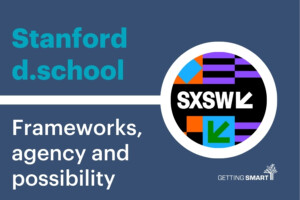
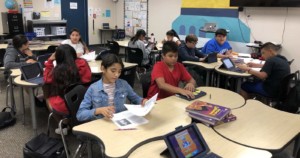
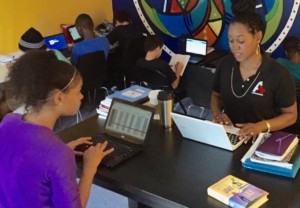
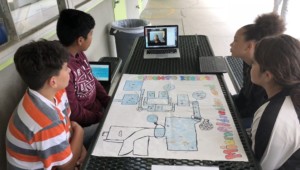
0 Comments
Leave a Comment
Your email address will not be published. All fields are required.